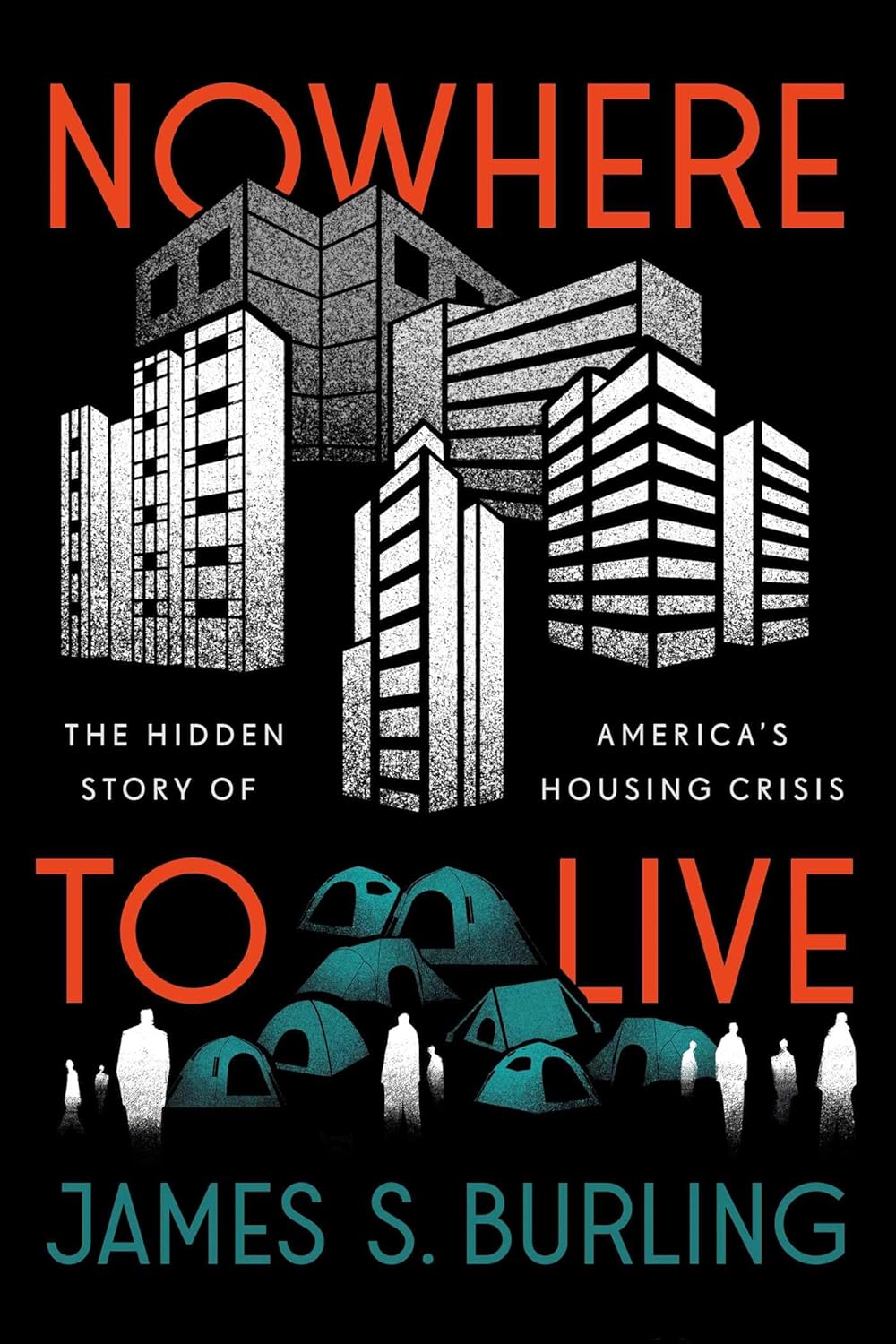Nowhere to Live? Blame the Government
For those wondering how America’s unaffordable housing market became exactly that, Pacific Legal Foundation vice president James S. Burling has an answer—or rather, a series of answers—in his new book Nowhere to Live: The Hidden Story of America’s Housing Crisis.
For conservatives, it should come as little surprise that so many of the root causes ultimately stem from restrictions on property rights imposed by all levels of government. These have combined to distort the housing market in a manner which artificially inflates prices for all, and even denies a home entirely to some.
“Government, Get out of Their Way!”
At the most basic level, the housing crisis is a problem of supply and demand. We’re not building as many new homes as we require. It sounds simple, but Burling’s analysis focuses on what is causing this imbalance, which a free market should otherwise default toward correcting. This is a considerably more complex undertaking. He argues that a range of government interventions stretching back generations have choked off the ability of supply to effectively meet demand. This in turn keeps home prices high. “The bottom line,” Burling writes, “is that we need less interference with the free market in housing, not more.”
The bulk of Nowhere to Live is dedicated to discussing the factors that have contributed to the housing predicament which Americans have collectively found themselves in, as Burling sees it. He devotes several chapters to zoning, explaining how it depresses the housing supply—often in areas where demand is highest and to the disproportionate detriment of racial and ethnic minorities. Laws and regulations—particularly of the environmental variety—also drive up the costs of building homes while injecting considerable delay and uncertainty into the development and construction process. There is also the problem of eminent domain abuse, and in some localities the lurking specter of rent control. Despite being perhaps the paradigmatic example of a “consensus bad idea” among economists, rent control still finds favor among the progressive Left. The Biden Administration recently proposed implementing it on a national scale.
Written by a property rights attorney, Nowhere to Live pays special attention to the court cases that have shaped the relevant legal landscape. Indeed, for those of us who happened to have taken a well-taught law school course in land use planning more than a decade ago, the book stirs long-dormant memories of digesting Euclid v. Ambler, Kelo v. City of New London, Lucas v. South Carolina Coastal Council, and other important Supreme Court precedents. Readers may well be struck by just how much influence the federal judiciary has had in shaping a political issue as intensely local as housing.
Burling acknowledges that the reforms he believes are necessary will likely not come easy. There are powerful vested interests in preserving the status quo, deleterious as much of it may be. Not-in-my-back-yard (NIMBY) sentiments are prevalent, powerful, and bipartisan. Single-family zoning exists because it is broadly popular among those who own such homes. Even attempts to reform the particularly onerous California Environmental Quality Act in Burling’s home state—which is ground zero for the housing crisis—have thus far been successfully opposed by what he calls “the iron triangle of NIMBYs, environmental lawyers, and labor unions.”
This does not prevent Burling from offering up some ideas, and the final chapters of Nowhere to Live detail a series of property rights principles and associated policy recommendations that he argues will help reverse a housing crisis that has been more than a century in the making. The book ends with a call for Americans to “Let builders build! Let people have the homes they need! And more than anything: Government, get out of their way!”
Environmental Lawfare
Although the problems detailed in Nowhere to Live are largely traceable to government, from the perspective of one who studies such things, it is notable how activist groups can exploit and exacerbate these problems by for their own purposes. This may be most evident in the realm of left-wing environmentalism, where the motivating incentives are often diametrically opposed to those which would favor the construction of more housing.
For instance, one of the book’s chapters explains how the Endangered Species Act—which Burling pithily characterizes as “a useful tool for those wishing to stop things”—has been exploited to stifle various human-benefiting land uses, such as housing construction. He quotes Andy Stahl, currently executive director of Forest Service Employees for Environmental Ethics but who once worked at the group now known as Earthjustice, as having described the Act’s importance to halting logging as follows: “Thank goodness the spotted owl evolved in the Northwest, for if it hadn’t, we’d have to genetically engineer it. It’s the perfect species for use as a surrogate.”
One especially memorable tale of obstructionist environmental lawfare from Nowhere to Live involves the Tejon Ranch housing development north of Los Angeles. First proposed in 1999, the developers subsequently endured more than 20 years of lawsuits from activist groups including the Sierra Club, the Natural Resources Defense Council, Audubon California, Climate Resolve, the California Native Plant Society, and, most importantly, the Center for Biological Diversity. The envisioned homes still have not been built.
Burling understandably spends only a few pages dealing with the particular litigiousness of the Center for Biological Diversity, which he calls “an organization that is dedicated to stopping all development on undeveloped land.” Some further research reveals that the group managed to file 266 separate environmental lawsuits against the Trump Administration in just four years. It’s approach to activist litigation can be illustrated through a collection of quotations from its executive director Kieran Suckling, compiled by the Southwestern Communities Coalition. For example, he once likened the group’s strategy to boxing, explaining that “we hit them once and before they have a chance to recover we hit them again, and we keep hammering away until they fall down.”
The Center for Biological Diversity is well-funded too. Tax filings reveal that in 2023 it reported over $34.4 million in total revenue, and that it has brought in at least $20 million annually since 2017. Major funders have included donor-advised fund providers such as the Fidelity Investments Charitable Gift Fund (over $12.7 million from 2018 to 2023) and the Foundation for the Carolinas (over $10.7 million from 2017 to 2022), as well as grantmakers such as the Sandler Foundation ($5.6 million from 2017 to 2023), the Schmidt Family Foundation (over $5.1 million from 2017 to 2022), and the Carroll Petrie Foundation ($2.65 million from 2019 to 2022).
A Worthwhile Read
Nowhere to Live is worth reading not just because it deals with an issue that is personally relevant to virtually every American, but because it delves into the often complex legal history involved. Housing is a hot-button political issue, and hot-button political issues are notoriously liable to oversimplification, misdirection, and sensationalism—temptations to which Burling does not succumb.
Burling draws upon his experience to show how the roots of America’s current housing crisis can be found in a web of laws and judicial precedents that all have the common denominator of restricting property rights. He argues that a societal reversion toward strengthening those rights offers a promising path forward. If that comes to pass, affordable housing would be just one of the positive outcomes.
Source: https://capitalresearch.org/article/nowhere-to-live-blame-the-government/
Anyone can join.
Anyone can contribute.
Anyone can become informed about their world.
"United We Stand" Click Here To Create Your Personal Citizen Journalist Account Today, Be Sure To Invite Your Friends.
Humic & Fulvic Liquid Trace Mineral Complex
HerbAnomic’s Humic and Fulvic Liquid Trace Mineral Complex is a revolutionary new Humic and Fulvic Acid Complex designed to support your body at the cellular level. Our product has been thoroughly tested by an ISO/IEC Certified Lab for toxins and Heavy metals as well as for trace mineral content. We KNOW we have NO lead, arsenic, mercury, aluminum etc. in our Formula.
This Humic & Fulvic Liquid Trace Mineral complex has high trace levels of naturally occurring Humic and Fulvic Acids as well as high trace levels of Zinc, Iron, Magnesium, Molybdenum, Potassium and more. There is a wide range of up to 70 trace minerals which occur naturally in our Complex at varying levels. We Choose to list the 8 substances which occur in higher trace levels on our supplement panel. We don’t claim a high number of minerals as other Humic and Fulvic Supplements do and leave you to guess which elements you’ll be getting.
Order Your Humic Fulvic for Your Family by Clicking on this Link, or the Banner Below.
Our Formula is an exceptional value compared to other Humic Fulvic Minerals because...
It’s OXYGENATED
It Always Tests at 9.5+ pH
Preservative and Chemical Free
Allergen Free
Comes From a Pure, Unpolluted, Organic Source
Is an Excellent Source for Trace Minerals
Is From Whole, Prehisoric Plant Based Origin Material With Ionic Minerals and Constituents
Highly Conductive/Full of Extra Electrons
Is a Full Spectrum Complex
Our Humic and Fulvic Liquid Trace Mineral Complex has Minerals, Amino Acids, Poly Electrolytes, Phytochemicals, Polyphenols, Bioflavonoids and Trace Vitamins included with the Humic and Fulvic Acid. Our Source material is high in these constituents, where other manufacturers use inferior materials.
Try Our Humic and Fulvic Liquid Trace Mineral Complex today. Be 100% Satisfied or Receive a Full Money Back Guarantee. Order Yours Today by Following This Link.







